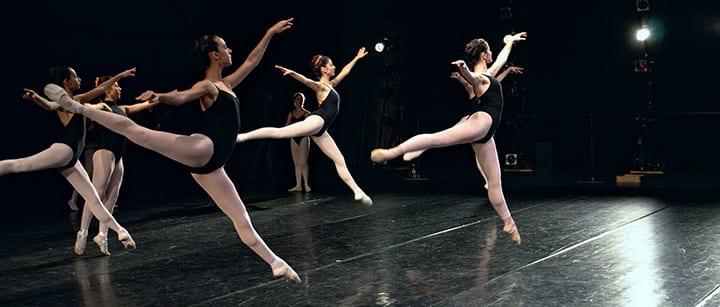 Whether you’re just starting out as a dancer or preparing for your solo debut, a professional instructor is a mandatory ingredient in your recipe for success. But do you know how to learn to dance at a pace that’s right for you? If you’re having trouble deciding between group classes and private lessons, consider some of the ways in which each instruction method can benefit you.
Whether you’re just starting out as a dancer or preparing for your solo debut, a professional instructor is a mandatory ingredient in your recipe for success. But do you know how to learn to dance at a pace that’s right for you? If you’re having trouble deciding between group classes and private lessons, consider some of the ways in which each instruction method can benefit you.
Is Dance Class Your Best Bet?
When students first enter the world of dance, it’s often through enrollment in a group class. This is almost always more affordable than scheduling a private lesson. A group class can help you decide whether a specific style of dance is right for you. It also removes the pressure from each individual student, allowing class members to share in each other’s progress and learn from each other’s mistakes.
- Learning Through Collaboration
Despite the prevalence of beginner classes, a group dance class isn’t just for newcomers. In fact, some styles of dance are heavily dependent on collaboration and improvisation between dancers, especially at the upper levels. For example, contemporary dance is an art form that constantly evolves to incorporate improvised movements and the dynamics between individual dancers. Supporting each other’s weight and learning synchronized, complementary footwork must always include at least some form of group training.
If you’re a modern dancer, it’s important to learn choreography that plays on the strengths and techniques of every troupe or class member. This isn’t always easy in a large group. Luckily, in a professional studio or conservatory, a group class can be as tiny as three or four people. This intimate environment fosters a stronger sense of collaboration and places a closer emphasis on improvisation, a key element of genres like jazz and modern dance. This allows dancers to anticipate each other’s movements and complement each other’s individual styles.
- Preparing for Group Performances
When conservatories and colleges prepare their students for performances, they often divide everyone into groups of similar experience levels, styles, and ages. Sometimes dancers must train and audition separately to land a spot in a group. However, it’s crucial that everyone warms up, learns the choreography, and practices as a team afterwards. Your class instructor and choreographer can monitor your collective process closely, adjusting the sequences according to the dynamics between dancers.
When Do You Need One-on-One Attention?
Even the most thoughtful and talented instructor can’t keep track of an entire class simultaneously. Sometimes students need personalized, one-on-one attention in order to continue growing as a dancer.
- Mastering the Proper Technique
If you want to become a professional dancer or improve your skills enough to land solo roles, you must eventually narrow your focus. Private lessons are the only way to truly master the proper technique, from the exact angles and lines of your limbs to the way you respond to musical cues. And if you’re preparing for a very important solo audition, private instruction is absolutely essential in order to show judges your best possible performance.
A private instructor will work closely with you on a regular basis, often scheduling multiple lessons per week. This one-on-one studio time lets him or her closely monitor your progress, identify specific mistakes, and correct your form. Even the most talented dancers eventually struggle with one particular aspect of a group or solo routine, so you should only regard this as a positive opportunity. For example, ballet dancers often have trouble keeping their torso aligned while their legs and arms carry them through spins and jumps. Professional, private lessons help correct this.
- Personalizing Your Learning Experience
Dance should ultimately be a fun and fulfilling way express yourself. But years of intensive training can exhaust you, slowing down your progress and diminishing the passion that makes good dancing great. If you’re stuck in a rut, consider personalized private instruction.
Private dance teachers don’t just tailor lessons to your strengths, weaknesses, and individual goals. They can also design warm-up routines and choreography that tap into everything from your musical tastes to your own personal style and character traits. Even if you’re not preparing for a competition or audition that requires a solo performance, choreographing your own individual routine is a fantastic way to stay engaged.
Both group classes and private lessons can transform your dancing abilities. However, if you’re committed to growing as an individual dancer or studying dance on a higher level, private instruction will inevitably become an essential part of your training regimen.
Photo by gabrielsaldana
Jill Cole

